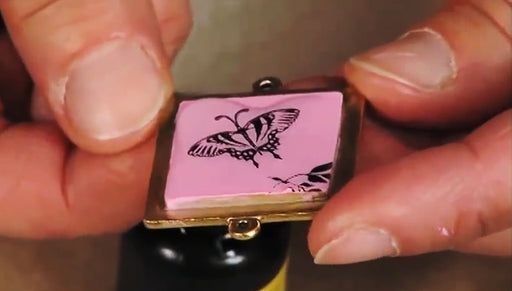Store Closing, Limited Stock
SKU VID-0313
Designer:
Julie Bean
Learn how to prepare your images and graphics inside collage pendants and bezel settings for filling with resin. Step by step directions on how to adhere your images using glue and seal them with sealant so that once you fill your pendants with resin, they will turn out beautiful and clear every time.





